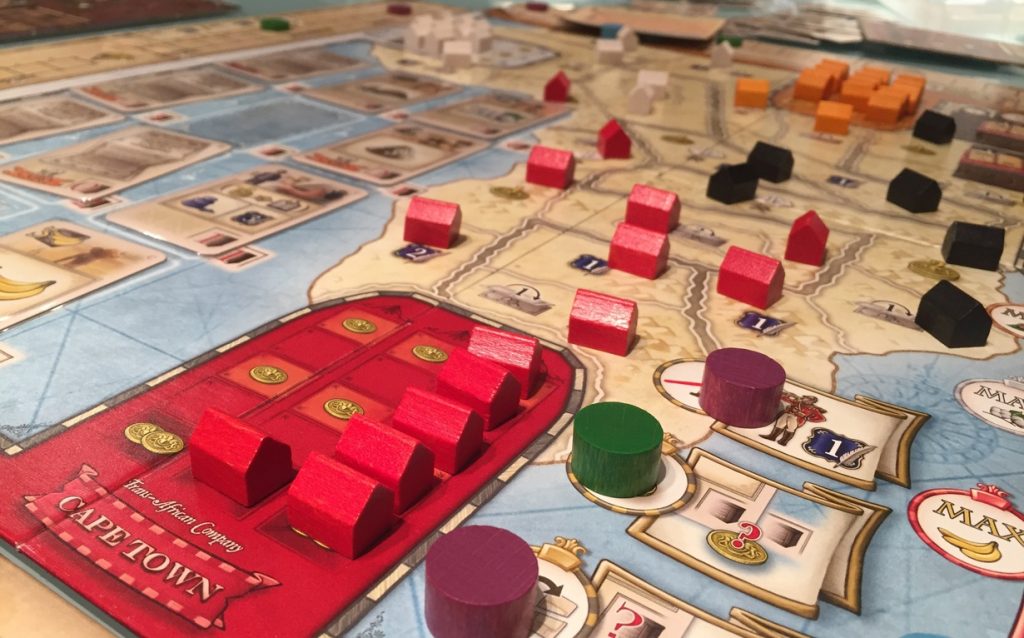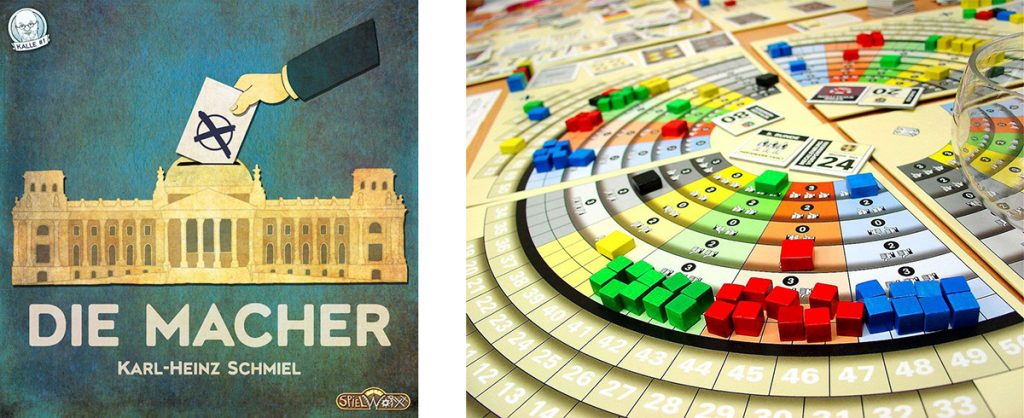Quinns: Ladies and gentlemen! Take a seat. Get comfy. Buy some ice-cream from the attendant I had sent to your place of work (yes, YOUR place of work, so keep an eye out for her). It’s time for Quinns’ Corner Awards ‘16.
In other words we’re one year on from 2015’s Corner Awards and I still haven’t figured out a better solution for review copies than letting them pile up in the corner of my flat. I bet Tom Vasel doesn’t have this problem. Not to worry! Once again I’m dispensing awards to all those games that didn’t suit a full review, but were too weird to eject from the corner.
I’ve heard the rumours. “Quinns is getting too old to review seven games in one article! They already use CG for any scenes where he has to bend his knees.”
To which I say: Ha! Watch and learn, kids.

Some of you were a little upset at the thin availability of Not Alone after we reviewed it this week. Let me fix that! Kenjin is yet another great game of face-down cards and second-guessing your opponents.
2-4 players each represent warring Japanese clans. Each player is given an identical deck of 13 soldiers, and two beautiful battlefields are placed on everyone’s immediate left and right. You’re now finished with set-up and can enjoy the stunned silence as your friends realise how screwed they are.
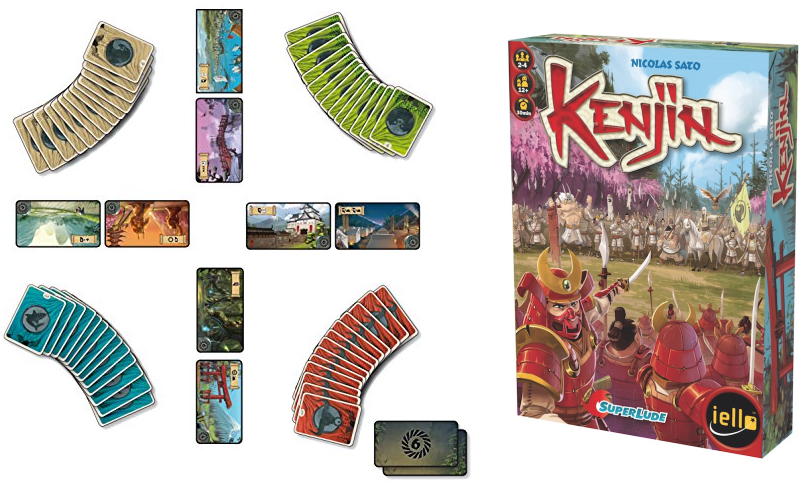
On your turn you play two cards to any of your four battlefields and at the end of the game the side with the stronger army wins each battlefield. There’s just one problem, which is that most cards are deployed to fields face-down. Included in your hand are 4 useless peasants, a lord who adds +1 strength to every card they fight with, a brute who adds +3 strength, a samurai who insta-kills all peasants and brutes and an archer who kills the samurai, but they’ll all look the same as they marshal against you.
Included in the cards you play face-up is a scout who peeks at enemy cards, a wizard who flips cards face-up, an assassin who eliminates any one face-down card and a general who enables last-minute repositioning.

Ensuring that your beleaguered brain hits the mat and stays down, dammit, is that each battlefield is worth a different amount of victory points, you get extra victory points for winning with your lord (so glorious!) or a peasant (how laughable!), and every field you might be playing with has a different rule. The supply camp resolves first and adds 1 to the victor’s strength elsewhere, the bridge can only hold 3 cards from each side, and so on.
I love this little box, and it’s going straight on my shelf right next to Welcome to the Dungeon from the same publisher. As I’ve come to expect from Iello the illustrations are just breathtaking, and while each player only takes 7 turns Kenjin often takes 25 minutes to play because there’s so much satisfying guesswork involved. The telescopic thinking each player can do is absolutely brutal for a box this small. If you think your opponent put her samurai there, then you can put your brute there, but you want to win that other field more, but how will the opponent there react if you play this card… it’s like an intoxicating layered shooter of game. You’re not just wondering what card to play, but when to place it, and where.
As you’d imagine, players who don’t like guesswork and hidden movement should avoid Kenjin. Me? I’ll fly the banner and fight for this territory. I think it’s ace. There’s even a cool 2 vs 2 team game where you sit opposite your friend!

Two years ago we reviewed Colt Express, the award-winning Wild West (or is it Keystone Cops?) simulator, but we weren’t blown away. Ironically for a game with a three-dimensional train, we found it didn’t have much depth. It was a fun, silly thing to play once or twice, perhaps with any compact progeny you have wandering around the house. I think that might make it a “family game”?
Since then I’ve played the Horses & Stagecoach expansion AND we were sent an advance copy of the Marshal & Prisoners expansion, and I’m thrilled to say that either one of them makes Colt Express into the game we wanted. With both expansions in play, it’s a gem. With the arrival of these expansions Colt Express is now more tactical, deadlier, cooler, and you still get to play with a toy train and tug it around the table making “Choo choo!” noises.
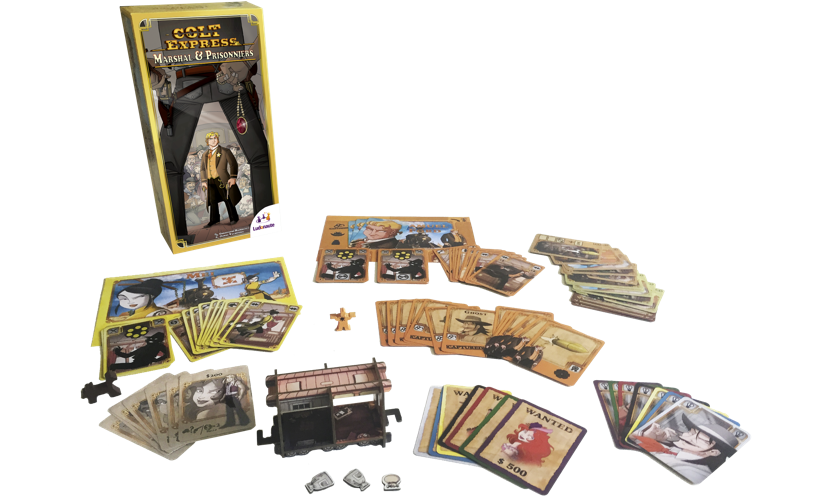
Best of all, the base game’s so cheap after winning the Spiel des Jahres that soon you’ll be able to buy the main game and both expansions for just a little more than the cost of a normal board game. I’d encourage you to do just that. With all three boxes a game of Colt Express runs over with cool ideas and hilarious bits of choreography. Usually I replace the word “hilarious” in SU&SD reviews, but this time I think it’s justified. Once you’ve seen a player get shot four times, punch the wrong player and finally get arrested in a single round, you’ll agree with me.
But only one box can win our prestigious Best Expansion (For Colt Express) award, and actually… I’m giving it to the first expansion, Horses & Stagecoach:
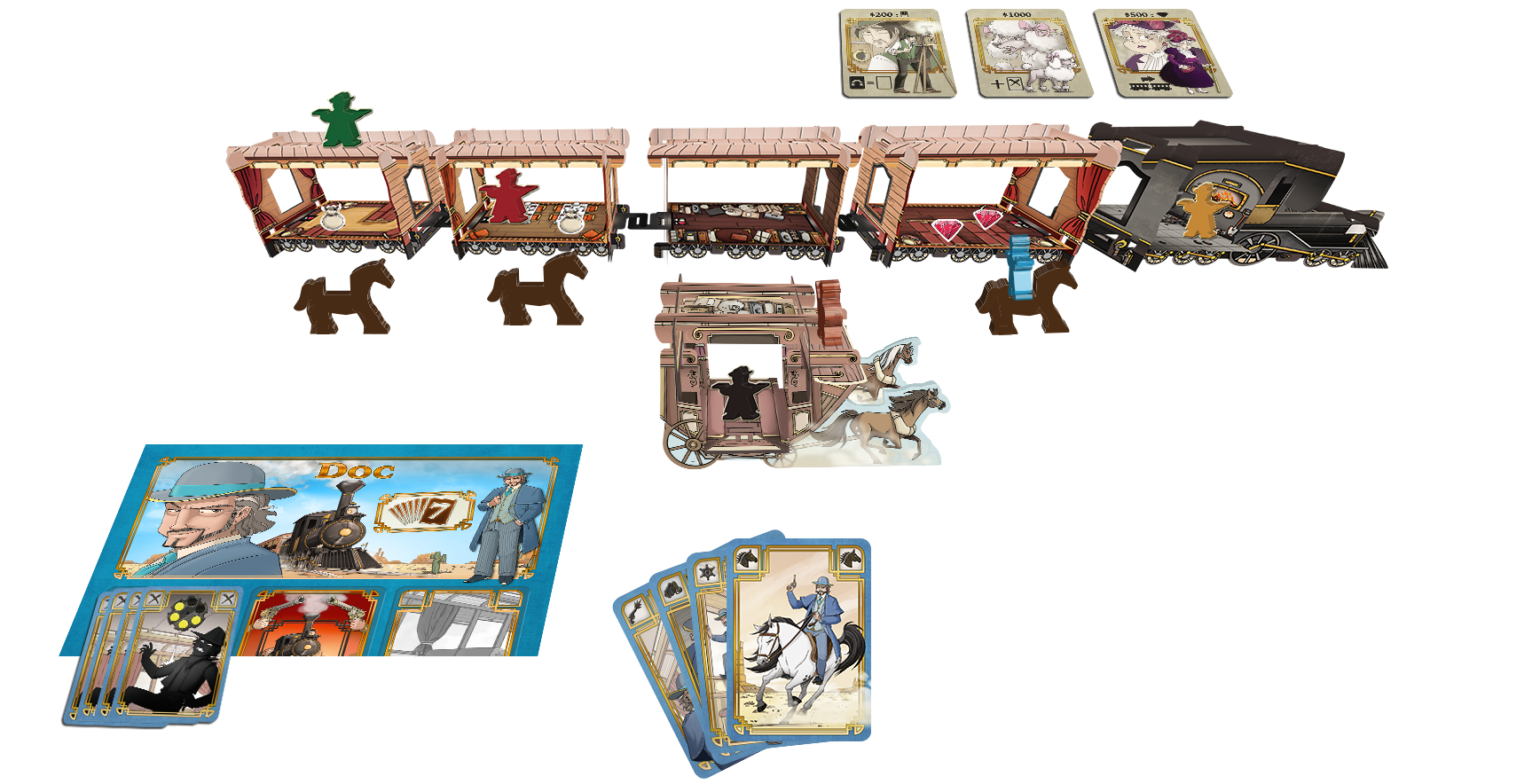
Don’t get me wrong, people. Marshal & Prisoners is plenty entertaining. It lets one player be a ludicrously dangerous marshal who’s defending the train from everybody else, and that’s tons of fun. Everyone’s going to want to try it, and after that nobody will want to give the role up. There’s a truly excellent risk/reward mechanic where bandits can gain incredible kudos from punching the marshal player, but that proximity just makes it easier for the marshal to arrest them, so there’s a renewed emphasis on guile and sneaking around. But when I think about what’s truly excellent about Colt Express it’s the choreography and the humour, and Horses & Stagecoach simply contains more humour and evocative stunts. The only thing better than a bandit leaping from the roof of a moving train onto their horse is when a bandit tries to do that, but the horse isn’t there. Oh no!
So there you have it. Shut Up & Sit Down didn’t recommend Colt Express, but now it does! Buy the base game and Horses & Stagecoach first, then get Marshal & Prisoners.
Choo choo, baby. Choo choo.

Aeon’s End was a Kickstarter that launched earlier this year, and this big ol’ box is now starting to slip out to backers and shops. And it’s good!
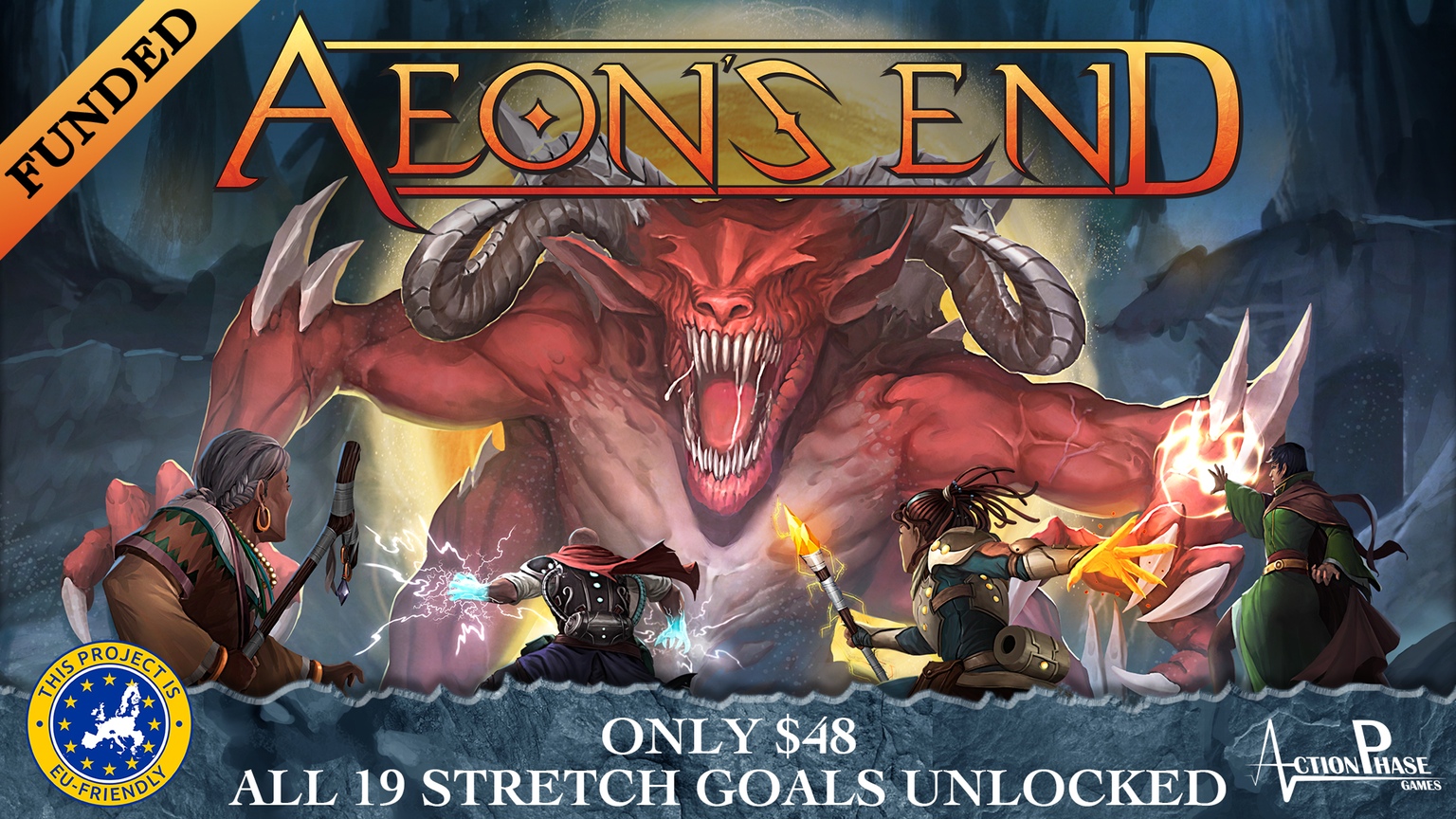
I talked about it a bit on podcast #49, but in essence it’s a co-operative deckbuilding game where players are all mages snatching up crystals and lining up great volleys of magic, trying to defend humanity’s subterranean stronghold from your chosen Nemesis.
It hits all the highs of deckbuilding, with players spending their turns gradually improving their deck, thinning out the pathetic cards you start the game with by buying better cards from a shared shop, but you also get to try a few smart ideas. You can also spend your turn’s wibbly magical currency ripping open the rifts above your personal player area, and each rift can hold a spell card from your hand as if you were loading bullets into an ethereal rifle. Since these spells temporarily leave your deck you’re making your engine more efficient, and choosing when to trigger each spell is a cute decision.
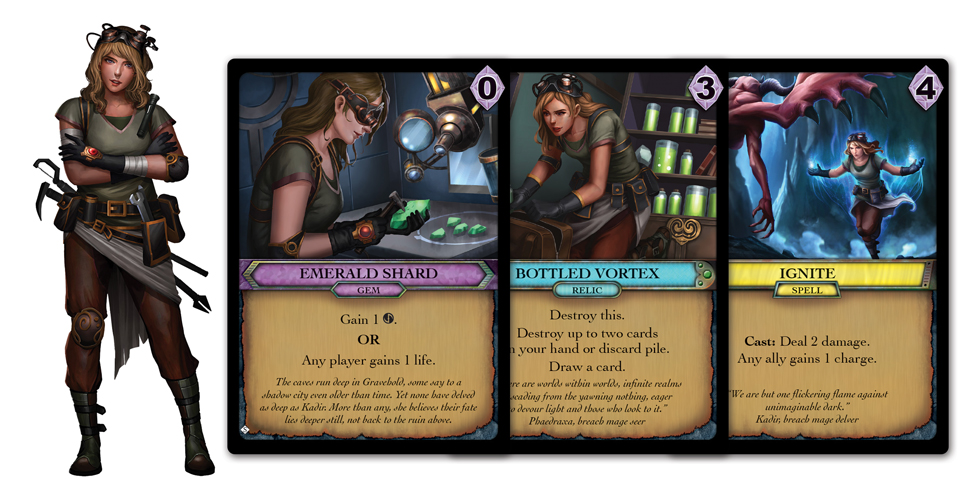
The other big change to the deckbuilding format is that each time you empty your draw pile and pick up your discard pile to draw more cards, you flip it upside-down without shuffling it. That special flavour of random chance, where drawing a hand feels like you’re pulling a lever on a slot machine, is replaced by an interesting decision as players question what order they should play cards out of their hand, because (obviously) that’s the order you’ll draw them later.
Beyond that, Aeon’s End feels like a “Deckbuilding’s Greatest Hits!” album. Each different Nemesis brings a different mechanical twist, whether that’s devouring cards out of the market, filling players’ decks with hostile cards, spewing monsters onto the table or attacking the players themselves.
But exactly like a greatest hits album, I found Aeon’s End just a little uninspiring. If this game came out in 2014 I’d have fallen bum over noggin in love with it, but as we roll over into 2017 the ideas, art design and component quality in this box are routinely unexciting. But if you’re still grooving on deckbuilders – perhaps if you’re one of the people who backed Hero Realms – you should definitely look into Aeon’s End. But basically if I come over to your house and Deckbuilding’s Greatest Hits is at in your CD player, I’d have to think twice about sleeping with you. Basically.

Oh man! So I got to try Good Cop Bad Cop this month. You might remember it as the hidden role game that’s being reborn as Leaders of Euphoria: Choose a Better Dystopia?
It’s really pretty great. Each player has three identity cards in front of them which will be some combination of “GOOD COP!” and “CROOKED COP!”, and depending on how many of each you have or if you got the trump “FBI AGENT!” or “KINGPIN!” card, you’re going to be on a different team. Good cops need to locate and kill the kingpin, while the team of bent coppers (as we say here in England) need to kill the FBI agent (or, as we call it in England, the Fabulous Bureau of Interestingpeople).
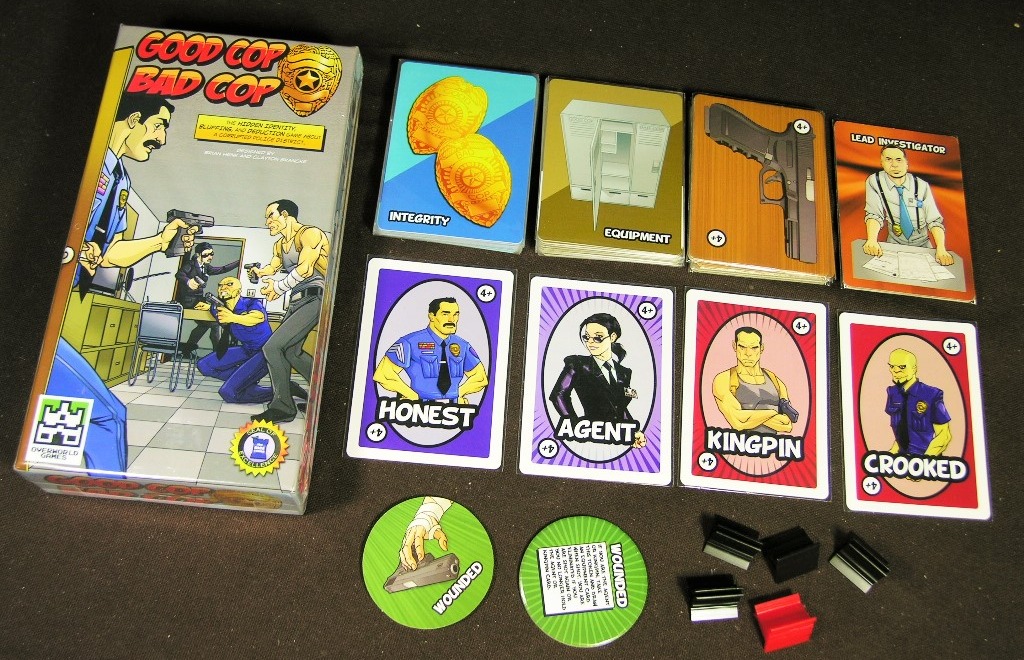
Here’s the thing. It’s h̶i̶l̶a̶r̶i̶o̶u̶s̶ really funny! But it made us laugh as much as it did because of the contemporary theme. The fact that you drop a gun after you shoot it is funny, and brings to mind a room full of incredibly shit police. It’s funny that your solution to thinking your friend is (probably?) crooked is to shoot them in the chest, eliminating them from the game. And the items that each player gets are funnier still. I used an evidence bag to claim another player’s item (it was evidence in an important trial, obviously), but when I took that player’s item it turned out to be a cup of coffee.
This actually worked out great. Coffee lets you take two turns in a row, enabling me to grab a gun, down my friend’s coffee in one heroic gulp, and then shoot them dead.
Well, it kinda worked out great. They were on my team. Still, better safe than sorry.
My fear is that while Leaders of Euphoria is making all these changes to create what the designers think is a better game, personally I can’t see myself laughing half as hard at their willfully silly Orwellian setting. It’s a bit like how I found that I liked Suburbia less after I added the silly tiles from the 5 Star expansion, like the coliseum or a statue of yourself. Sometimes these things are funnier if you play them straight, you know? So we’re tentatively giving this game an award. The reimplementation will probably still be great, but I’m sad to lose that theme.

Alight, who likes trivia? Not us, apparently, since we’ve never reviewed a trivia game in 5 years of running SU&SD. Let us know some good ones in the comments, eh? We could do a special episode next year.
This week I got sent a trivia game I liked, anyway. London-based publisher Big Potato Games sent me their entire catalogue, which included Mr Lister’s Quiz Shootout. A game with BULLET HOLES IN THE BOX that are ACTUAL HOLES and are ALSO IN THE MANUAL AND INLAY. So good.
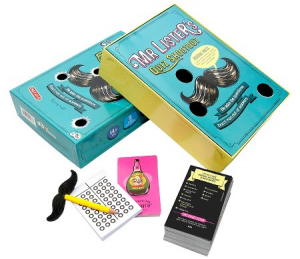
Obviously being forced to answer actual trivia questions is horrifying, as evidenced by the board game community’s favourite trivia game being Wits & Wagers, where you have to guess at impossible questions but also guess which of your friends’ guesses was closest. How much do you know how much your friends know?
Mr Lister’s Quiz Shootout takes a similar tack. The questions all involve lists – “What are the 8 most common ways to cook eggs?” – and each team bounces back and forth, providing just one answer. If both teams manage to land three correct “hits” in this “shootout”, each team then has to guesstimate an impossible tiebreaker, like “How many eggs does the UK’s population eat in a month?”
So that’s all swell, but the real reason I like this game is that a final player is Mr Lister, reading all the questions, hurrying the teams and keeping score in their best impression of a TV game show host. I’m not a huge fan of trivia but I LOVED doing that. So basically I love playing this game because I don’t have to play this game? Nice. Also: holes.
(Also also, it reminds me a bit of Anomia, which is certainly no bad thing.)

I take it all back! Shut Up & Sit Down has finally found a game for kids that we like, and for once we’re not saying “This is an awesome game for drunks (and maybe children?).” Beasts of Balance is a truly magical toy/board game/video game hybrid, although at £69 (batteries not included) it’s wincingly pricey.
In a nutshell – well, outside of the nutshell you’re playing something like Jenga, and inside the nutshell is magic.
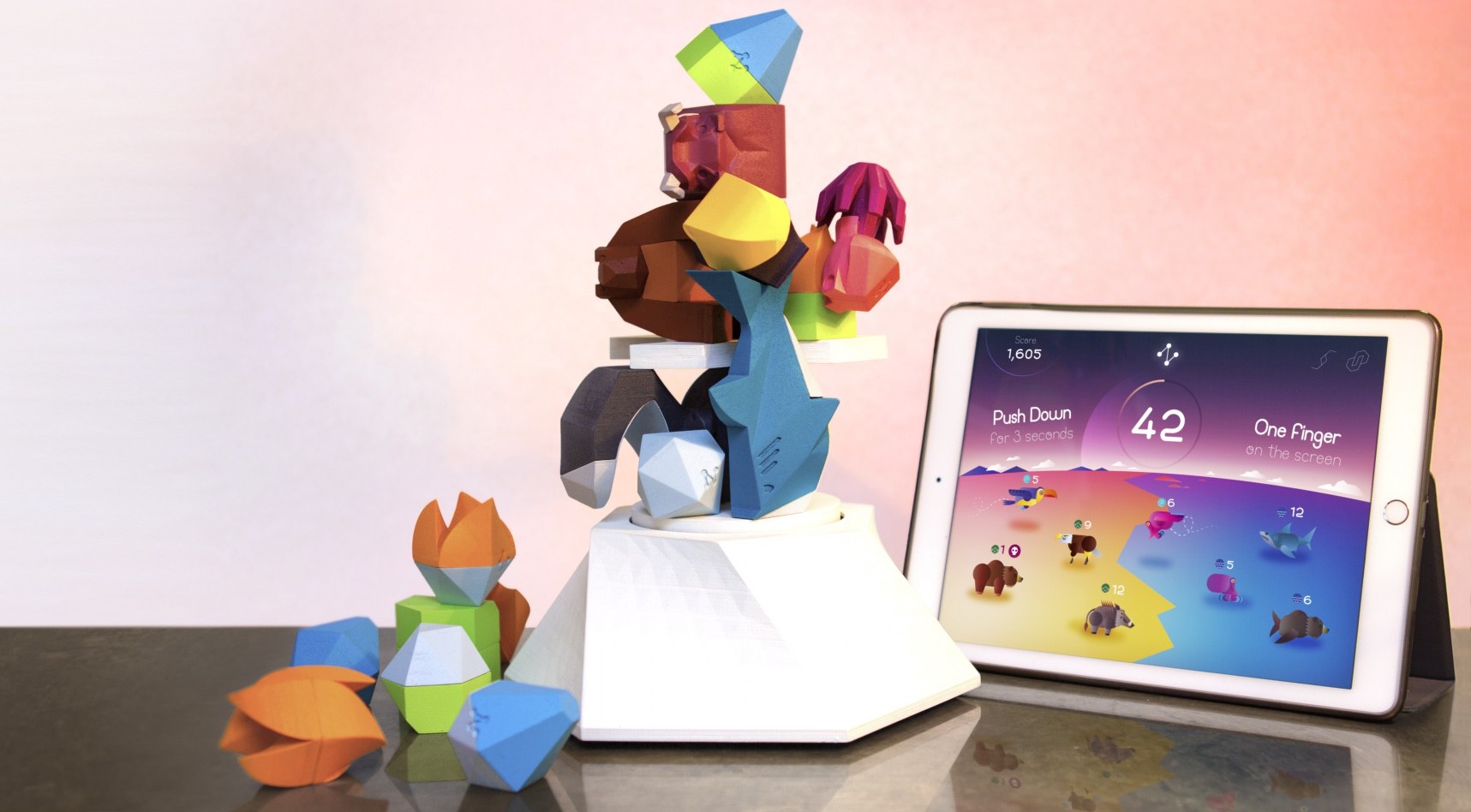
Beasts of Balance starts with you placing a bluetooth-enabled stand in the middle of the table, and players can take turns (or not!) to place willfully-awkward objects on top of it. By touching an octopus to the base, then placing it on top of the stand, your tethered tablet or phone will inform you that your world now has a octopus! Congratulations on your octopus. You must be very proud. No I don’t want to pet it.
Maybe next you balance a bear on the stand. Great! What fun…
But what’s this? Your device now shows that the octopus is jealous of the bear, a far superior animal, and is losing points every turn. Soon it will go extinct from sadness. Not to worry! Perhaps you’ll balance a water element on your increasingly-awkward arrangement to pep up your aquatic creatures, or perhaps you’ll add a “cross” shape that fuses your bear with the octopus and adds an octobear to your world. Just make sure your arrangement doesn’t fall over or it’s game over!
I don’t want to say any more because Beasts of Balance doesn’t even have a manual. Iy encourages experimentation to figure out the rules of this mysterious score-attack game you’re playing. Just rest assured that there are hard and fast rules, but placing shapes onto your circus-like animal stack remains a curiously enigmatic and difficult dexterity game. It is in absolutely no way as easy as the above photo makes it look.
There’s not an awful lot to Beasts of Balance beyond that, but as a novelty to show curious friends or family or miniature progeny, it’s pretty spectacular. It won’t be entering my personal curated collection, but if I had kids then not only would I be buying it, I’m sure I’d be recovering a saliva-spattered bear from my car footwell for a good few years.

Oh god I’ve run out of steam. Maybe I am getting old.
(C’mon, Quinns, you can finish this)
I don’t know…
(QUINNS, WE BELIEVE IN YOU)
Ok guys, I can do it… I’ll do it for you…
Do you remember at the beginning of this year when I was quite literally addicted to buying games from Z-Man’s range of deluxe card games? Aquarium is another one of those, and while it’s far from my favourite it’s still secured a space in my collection next to its brothers and sisters.
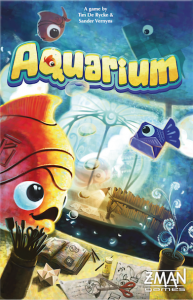
The theme on this one is a touch abstract, but I’m going to describe it literally because to do so makes me smile. 2 to 6 players are all competing to see who can create the best Aquarium, although you’re all broke and will routinely spend too much money on fish and then fish will die because you can’t afford their food. This is all the more weird because the “fish” you’re collecting appear as beautiful crepe paper constructions, splodges of paint or even wind socks, which makes me think that all the players are tripping balls. Oh, and the pet shop you’re buying these fish from is all joint-owned by you.
Frankly, if you don’t think that’s the best theme for a game ever, I’m afraid we can’t be friends.
Your turn in Aquarium is nice and simple. Either you add a card to the shop in the middle of the table, which earns you a weird bubble of currency, OR you state your intention to buy every single card in the shop, which is where things get complicated.
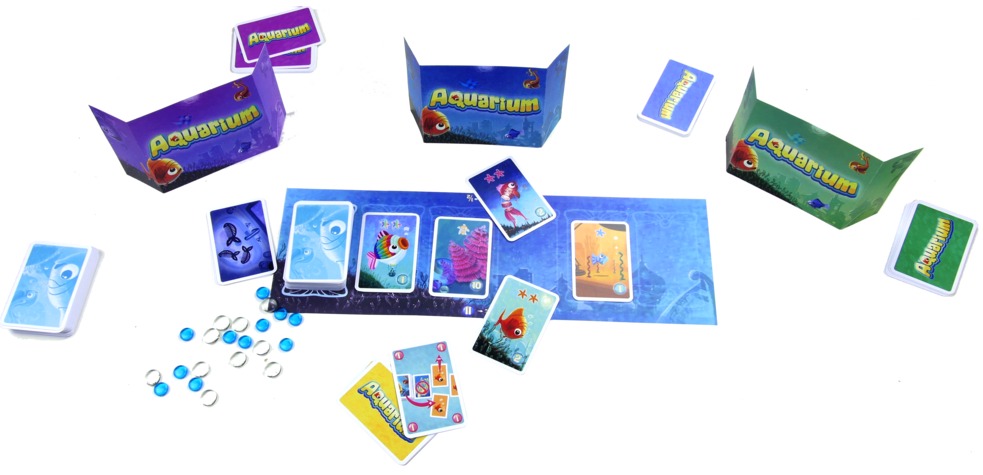
Every other player then gets the chance to play a card from their hand messing with the shop. I imagine you hear your friend is visiting the shop and hurriedly drive over there (weaving all over the road because you’re high, don’t forget) to mess with the till or the stock. Cards from your hand can add cards to the shop, remove them, swap them, or mess with the total price. Most importantly, each player has a single card that halves the price of the goods on display, but if the buyer still chooses to buy what’s on display after their friends are done dicking with it the buyer then pays you instead of the bank. But whatever card everyone plays is then out of their hand until the next feeding phase, and if the buyer chooses not to buy the stock it all permanently leaves the game.
There’s lots more to Aquarium than that, like needing to collect sets of fish and pay for their food, or the option to breed fish or add plants to your tank, but that’s the elevator pitch.
And it’s good! It’s not wildly entertaining or anything, but the presentation is absolutely beautiful and the game itself is like nothing I’ve ever played. I enjoy it quite a bit. Buy it if you like! It’s not fun enough for a SU&SD review, and seeing fish you want disappear down the toilet can be enormously frustrating, but like a real fish tank I’m going to keep it on display and alternately let it enrich my life and forget that it exists.
OH MY GOD WE’RE DONE. It’s finished! We did it. I’ll see you guys for Quinns’ Corner Awards in 2017, assuming I don’t chicken out.
And hey! Speaking of awards, the Shut Up & Sit Down forums are currently accepting nominations for the Best of 2016 Pearple’s Choice Awards. Voting will begin there shortly, and we’ll be posting the results and some thoughts on the front page of the site.



